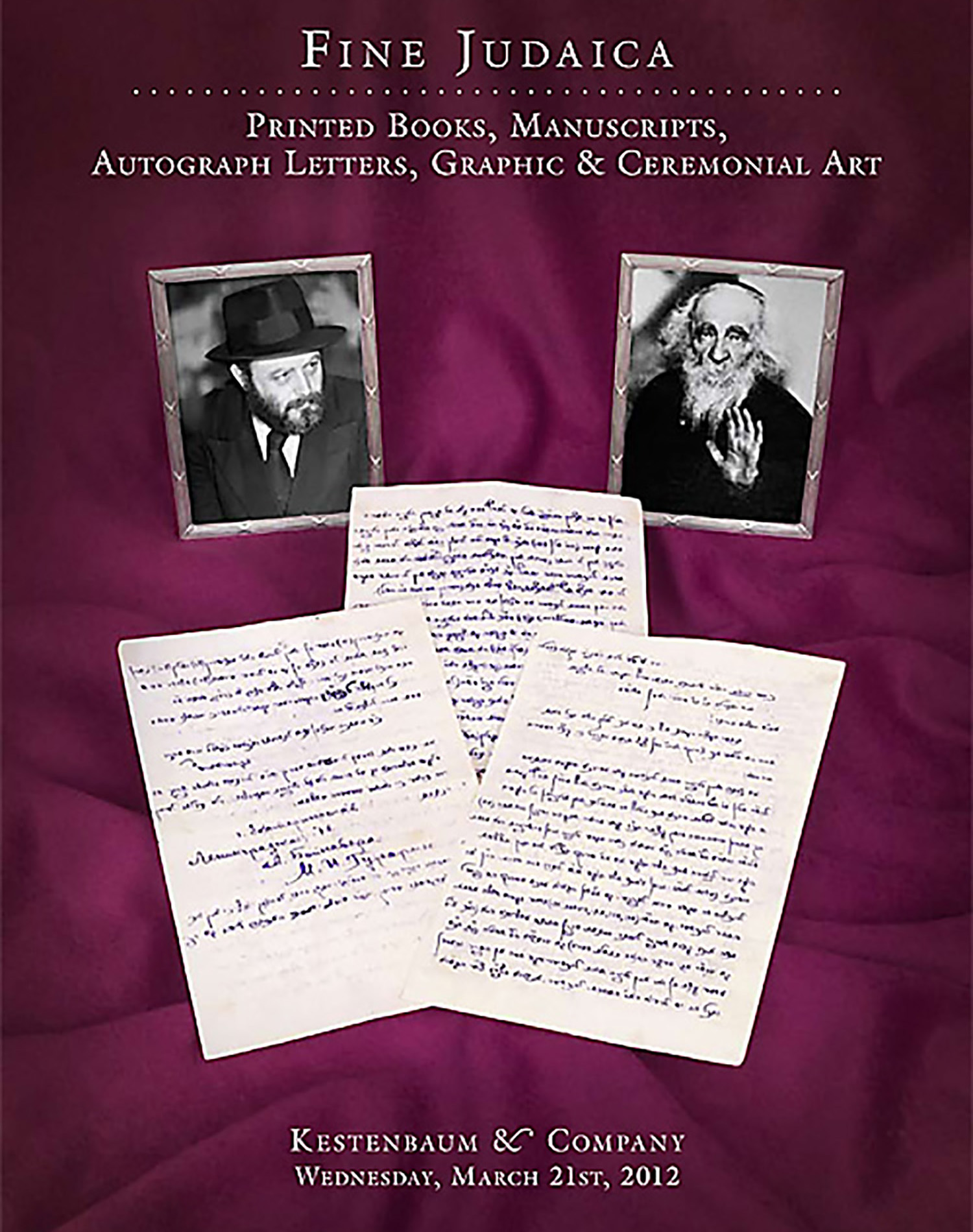Tractate Eruvin. Two large manuscript leaves.

AUCTION 54 |
Wednesday, March 21st,
2012 at 1:00
Fine Judaica: Printed Books, Manuscripts Autograph Letters, Graphic & Ceremonial Art
Lot 291
(TALMUD, BABYLONIAN).
Tractate Eruvin. Two large manuscript leaves.
Germany: 12th-13th century
Est: $18,000 - $22,000
<<Two virtually complete medieval manuscript folios of Tractate Eruvin.>>
A detailed examination of the text of these manuscript folios as compared to the text of the standard Vilna edition of the Talmud reveals well over sixty variances. Although many are minor textual differences, some are of important significance. In cases where these variances are noted elsewhere, this MS would support these variant readings. For example: on f. 88, in the Vilna edition, the Amora “Raba” is cited a number of times. The Mesoreth HaShas already notes that the Rif and the Rosh had the reading “Rovoh” who was of a later generation. This MS has the reading “Rovoh” which supports the reading of the Rif and the Rosh. On f. 88b Tosfoth corrects the reading “elah hatham” to “elah lemai” taking out the word “hatham” (there). Our manuscript is similar to Tosfoth with an additional clarifying word “hacha” (here). On f. 89a (the last line of chapter 8) Rashi corrects the text changing the word “mimanei” (utensils) to “maya bemani” (water in utensils) and the word “hatham” (there) to “hacha” (here) - exactly as in this MS.
Sometimes there are significant changes of the names of the Amoraim cited. For example, on f. 99a where the Vilna edition cites just “Reish Lakish” the MS adds “R. Shisha brei derav Idi meshum R. Shimon ben Lakish”- an extra generation. Other interesting changes on f. 99a differentiate the Vilna edition’s “Rav Yoseph” to the stated “Abayei” in the MS, and from “Rav Huna”in the Vilna edition to “Rav Chama” in the MS. Sometimes the MS changes an Aramaic phrase to Hebrew, such as “Ha Leka” to “Aval Ein” or “Ika” to “Yesh”. On f. 88b, the MS has a mnemonic device (“siman”)of an acronym of four letters (A, G, B, R) not in the standard Talmud editions.
A number of these changes are not noted in R. N. N. Rabinowitz’s monumental work Sepher Dikdukei Sopherim which examines variant readings found in the very earliest Talmud manuscripts.
